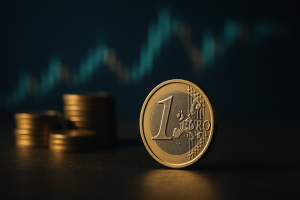If you’ve spent any time in the world of crypto, you’ve probably heard people shouting “It’s a bull market!” or warning about a looming “bear market.” But what exactly do these terms mean, and why do they matter so much for your trading strategy?
In this guide, we’ll break down the differences between bull and bear markets in crypto, how to spot them, and most importantly, how to trade in each phase so you’re not caught holding the bag when things go south.
🐂 What Is a Bull Market in Crypto?
A bull market is a period where prices are rising steadily over a sustained period of time. It’s defined by investor optimism, strong buying momentum, and higher highs and higher lows on the charts.
Key Signs of a Bull Market:
- Bitcoin and Ethereum are both trending upward
- Total crypto market cap increasing weekly
- Altcoins start outperforming Bitcoin (especially lower market cap coins)
- Positive news and narratives dominate headlines
- New retail traders and institutions are entering the market
During a bull market, FOMO (fear of missing out) is at its peak, which can be both profitable and dangerous.
🐻 What Is a Bear Market in Crypto?
A bear market is a sustained period of declining prices, usually following a bull market peak. It’s characterized by pessimism, fear, and low volume.
Key Signs of a Bear Market:
- Bitcoin drops 65%+ from all-time highs (historically accurate)
- Altcoins crash 80–95% or more
- Lower highs and lower lows dominate the charts
- Trading volume declines
- Negative news (regulation, scams, hacks) makes headlines
- Narratives switch from “To the moon!” to “Is crypto dead?”
In a bear market, emotions are reversed, fear and uncertainty rule, and liquidity dries up.
🔁 How Do You Know Which Market You’re In?
Sometimes it’s not obvious. Especially during sideways consolidation or retracements within larger trends.
Here’s how to tell:
| Market Phase | Price Action | Market Cap Direction | Volume | Sentiment |
|---|---|---|---|---|
| Bull Market | Higher highs + higher lows | Rising | Climbing | Greed/FOMO |
| Bear Market | Lower highs + lower lows | Falling | Declining | Fear/FUD |
| Retracement | Temporary pullback in an uptrend | Still bullish overall | Mixed | Doubt/uncertainty |
| Accumulation | Sideways with low volume | Flat | Low | Indifference |
💡 Pro Tip: Use volume and market structure together to determine whether you’re in a pullback or the beginning of a full-blown bear trend.
📈 How to Trade in a Bull Market
- Ride the trends – follow momentum, use moving averages to confirm direction
- Let winners run – take profits on the way up, but don’t be too quick to sell
- Watch volume – high volume confirms breakouts; low volume = caution
- Look for rotations – when Bitcoin slows, altcoin season often begins
📉 How to Trade in a Bear Market
- Learn to short – or at least avoid longing into downtrends
- Focus on strong fundamentals – quality projects survive
- Use smaller position sizes – volatility is high and liquidity is thin
- Zoom out – this is where millionaires are made if you play the long game
📊 Real-Time Example (As of July 2025)
At the moment, the crypto market is showing signs of recovery after a major retracement. Bitcoin dominance is starting to roll over while $TOTAL3 (altcoins excluding BTC/ETH) is building a strong base, a classic pre-altcoin-season signal.
Volume is returning, and long-term investors are quietly accumulating strong fundamentals plays, while the retail crowd is still scared.
✅ Get the Tools You Need to Survive Both Markets
Whether we’re headed for a bull market rally or entering a fresh bear run, one thing is clear: you need a plan. That’s where the EPIQ Trading Floor comes in.
Inside the EPIQ Trading Floor, you’ll get:
🔹 Real-time trade setups (spot, futures, forex)
🔹 Volume-based market tools and heatmaps
🔹 Altcoin watchlists + macro dashboards
🔹 Full trading academy (first section free!)
🔹 Market cycle coaching so you don’t get stuck holding the bag
🔹 3-day free trial – cancel anytime
👉 Start your free trial of EPIQ Trading Floor now and never trade alone again.
⚠️ Final Note
This content is for informational purposes only and not financial advice. Always do your own research and consult a professional before making investment decisions.










Responses